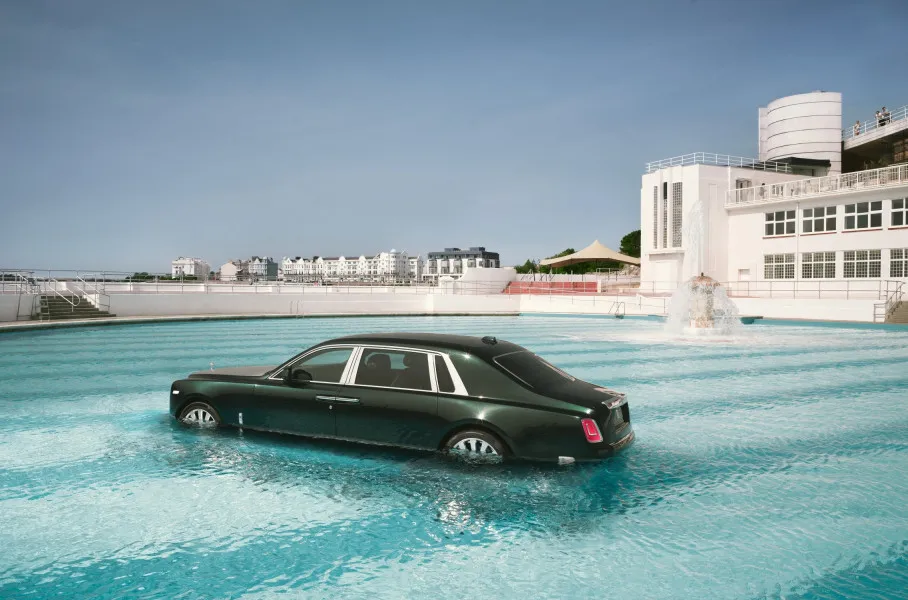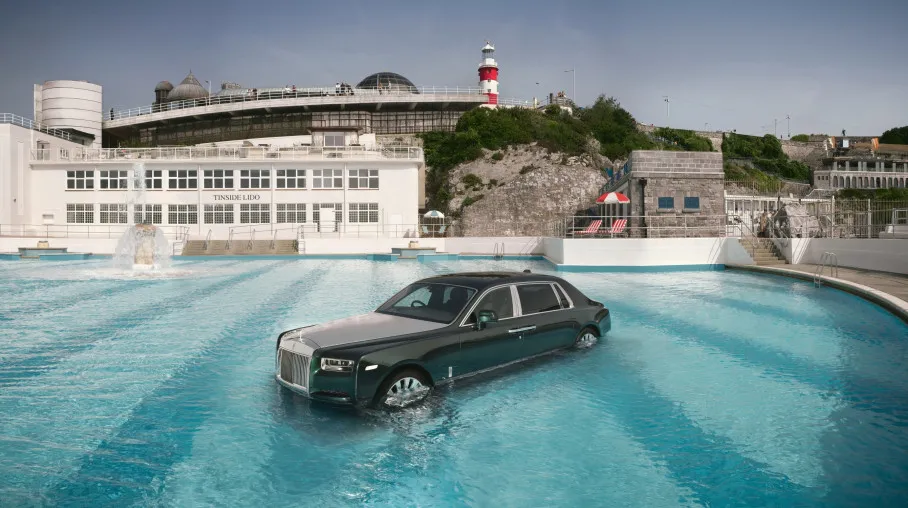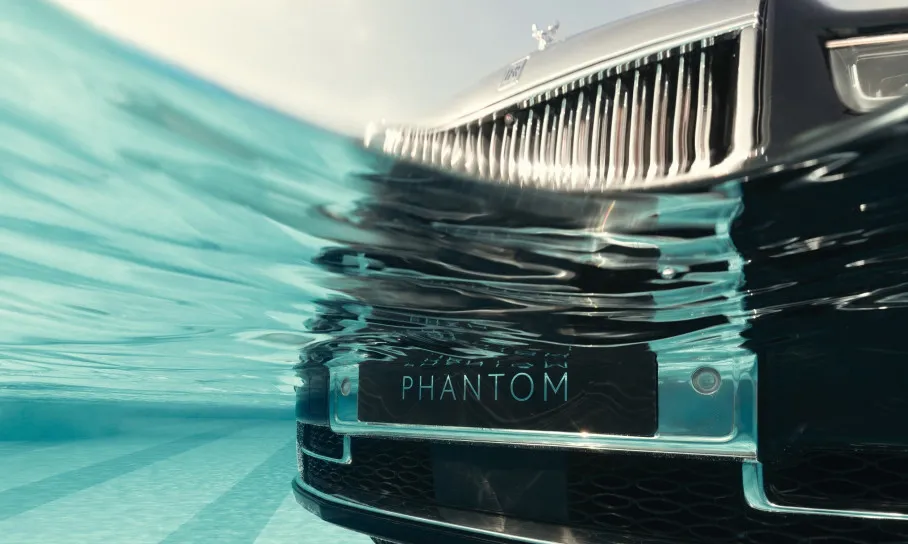Phantom at 100: From Rock ‘n’ Roll to Rap – A Bold Century in Music
The story of modern music cannot be told without its icons. And the story of those icons, in many ways, cannot be told without the Rolls-Royce Phantom. Since its debut in 1925, Phantom has been more than the pinnacle of automotive engineering: it has been a cultural canvas for the world’s most creative figures. From jazz legends and Hollywood stars to rock revolutionaries and hip-hop moguls, Phantom has been the car of choice for those who didn’t just make music – they made history.
As Phantom celebrates its centenary in 2025, its legacy stands as much on stages and album covers as on boulevards and private driveways. Rolls-Royce Chief Executive Chris Brownridge reflects:
“From the Golden Age of Hollywood to the rise of hip-hop, over the last 100 years, music artists have used Phantom to project their identity and challenge convention. Their motor cars often became icons in their own right, with a lasting place in the history of modern music.”
The Early Years: Jazz, Glamour and Global Icons
The connection between Rolls-Royce and popular music began in the era of jazz and cabaret. Duke Ellington, Count Basie, Fred Astaire, Edith Piaf and Sam Cooke were among the first to embrace Phantom as the ultimate expression of artistry and achievement. Ravi Shankar used the car to symbolize cultural prestige while transporting Indian classical music into global consciousness.
Phantom was equally beloved by the impresarios behind the music: Berry Gordy, who built Motown into a global powerhouse, and Ahmet Ertegun, the visionary co-founder of Atlantic Records, both chose Rolls-Royce as their symbol of taste and success.
In Hollywood, Phantom became a star on its own. Marlene Dietrich, already an international sensation after The Blue Angel, was welcomed to California in 1930 with a green Phantom I, which later appeared in her Oscar-nominated film Morocco. The car and the actress became inseparable symbols of glamour and power.
Rock ‘n’ Roll Royalty: Elvis, Lennon and the Age of Rebellion
By the 1950s and 60s, Phantom was no longer just a symbol of prestige – it was a statement of cultural defiance.
In 1963, at the height of his fame, Elvis Presley purchased a bespoke Midnight Blue Phantom V. Fitted with microphones, a writing pad and a rear-seat mirror, it reflected both his boundless energy and his relentless need for self-expression. Famously, the car’s reflective finish even fooled his mother’s chickens, who pecked at their own images in the paintwork.
No story, however, matches that of John Lennon. After A Hard Day’s Night, Lennon bought a Phantom V in blacked-out trim. But by 1967, just before Sgt. Pepper’s Lonely Hearts Club Band, he reinvented it as a psychedelic masterpiece: yellow paint, swirling red, blue and green patterns, floral motifs, and his Libra star sign. To the youth, it was liberation on wheels; to traditionalists, it was scandal. One onlooker in London even attacked the car with her umbrella, shouting, “How dare you do that to a Rolls-Royce!” Decades later, Lennon’s Phantom became one of the most valuable pieces of rock memorabilia ever sold.
For Lennon, Phantom was a mirror to his life’s phases: he would later commission a stark white Phantom V to reflect his minimalist “White Album” era with Yoko Ono. Fitted with a sunroof, turntable, phone and TV, it was as avant-garde as its owner.
Showmanship and Spectacle: Liberace & Elton John
In the entertainment capital of the world, Phantom found new life as performance art. Liberace, the flamboyant Las Vegas entertainer, transformed his Phantom V into a stage prop covered in mirror tiles, driving it directly into his shows. It was extravagance incarnate – and a perfect match for his persona as “Mr. Showmanship.”
A generation later, a young Reginald Dwight – Elton John – followed in Liberace’s footsteps. Elton not only owned multiple Phantoms but personalized them to reflect his evolving style. One was fitted with a cutting-edge sound system so powerful the rear window had to be reinforced. Another, painted pink and white, became part of rock folklore when Elton gifted it to his percussionist, Ray Cooper, in lieu of cash payment. That same car later chauffeured a young Damon Albarn, who would go on to shape Britpop with Blur – before returning to collaborate with Elton on The Pink Phantom in 2020.
The Myth of Rock Excess: Keith Moon
The legend of Keith Moon – The Who’s mercurial drummer – immortalized Phantom in one of rock’s most enduring myths. According to the tale, Moon celebrated his 21st birthday by driving his Rolls-Royce into a swimming pool at the Holiday Inn. Though the story’s details are disputed – some claim it was another car, others deny it happened at all – the image of a Rolls-Royce sinking beneath the water became synonymous with rock ‘n’ roll’s reckless indulgence.
To honor this legend, Rolls-Royce marked Phantom’s centenary by submerging a retired Phantom shell into Plymouth’s Tinside Lido, the very backdrop of a 1967 Beatles photoshoot. Fiction and reality merged, cementing Phantom’s mythos in music lore.
Hip-Hop and Modern Reinvention
By the 1990s, hip-hop had emerged as the cultural vanguard – and Phantom became its ultimate status symbol. When production moved to Goodwood in 2003 with the Phantom VII, the car found new life as the muse for a generation of artists redefining wealth and power.
In 2004, Snoop Dogg and Pharrell Williams showcased a Phantom VII in Drop It Like It’s Hot, one of hip-hop’s most iconic videos. Lil Wayne, 50 Cent, Jay-Z and countless others soon made Phantom a lyrical shorthand for ultimate success.
The car’s Starlight Headliner – thousands of fiber-optic lights creating a night-sky effect – became a recurring metaphor in rap verses. The phrase “stars in the roof” is now deeply embedded in hip-hop culture, proving Phantom’s power to transcend from automobile to symbol, from machine to music.
Phantom at 100: More Than a Car, a Cultural Icon
Across a century, Phantom has remained more than Rolls-Royce’s flagship. It has been a vessel of rebellion, artistry, showmanship and aspiration. For Marlene Dietrich, it was elegance; for Elvis and Lennon, it was self-expression; for Liberace and Elton John, it was performance; for hip-hop, it became poetry on wheels.
In celebrating Phantom’s centenary, we celebrate the artists who chose it to amplify their voices and identities. Phantom is not simply the car of the stars – it is part of the soundtrack of the 20th and 21st centuries.
As Rolls-Royce looks to its next century, Phantom remains what it has always been: the ultimate canvas for the world’s boldest music makers, past, present and future.
read more: Rolls-Royce Chess Set: Luxury Redefined Beyond the Road







